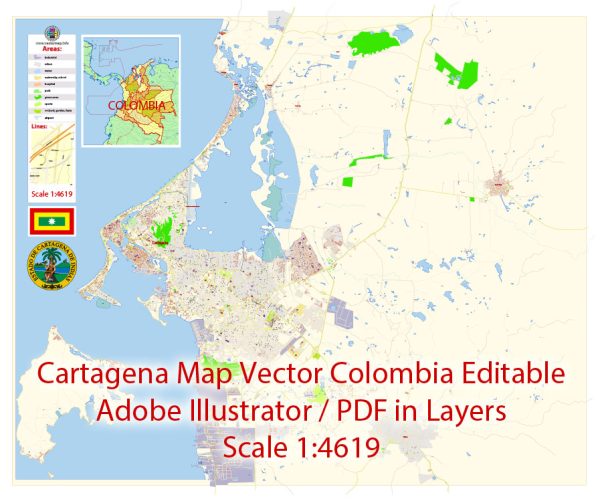Cartagena, Colombia, is a historic city located on the northern coast of the country, along the Caribbean Sea. Its history is rich and diverse, spanning centuries of colonial rule, trade, and cultural influences. Here is a brief description of the history of Cartagena:
- Pre-Columbian Era: Before the arrival of the Spanish in the early 16th century, the area that is now Cartagena was inhabited by indigenous people, notably the Carib and Sinú cultures. These indigenous groups had established settlements and engaged in trade along the Caribbean coast.
- Spanish Conquest: In 1533, Spanish explorer Pedro de Heredia founded the city of Cartagena. The city was named after the Spanish city of Cartagena and quickly became an important Spanish colonial port due to its strategic location and natural harbor. Cartagena served as a key hub for shipping goods and precious metals back to Spain.
- Pirate Attacks: Cartagena was a frequent target for pirates and privateers in the 16th and 17th centuries, with famous pirates like Sir Francis Drake and John Hawkins raiding the city. The Spanish crown invested heavily in fortifications, leading to the construction of a series of fortresses and walls to defend the city.
- Colonial Architecture: Cartagena’s historic center, known as the “Walled City” (Ciudad Amurallada), is a UNESCO World Heritage Site and is famous for its well-preserved colonial architecture. The city features colorful buildings with balconies, cobblestone streets, and numerous churches and plazas.
- Independence and the Bolívar Era: Cartagena played a significant role in Colombia’s fight for independence from Spanish colonial rule. It was the site of the historic declaration of independence from Spain on November 11, 1811. Simón Bolívar, a key figure in the struggle for South American independence, also had a presence in Cartagena.
- 19th Century and Beyond: Cartagena continued to be an important port city and played a role in the development of Colombia as a nation. The city’s history is intertwined with the country’s political, social, and economic evolution.
- Modern Cartagena: Today, Cartagena is one of Colombia’s most popular tourist destinations. It offers a unique blend of history, culture, and beautiful coastal landscapes. Visitors can explore the historic city center, enjoy the beaches, and experience the vibrant local culture.
Cartagena’s history has left an indelible mark on the city’s identity, and it remains a place where the past and present coexist in a colorful and lively atmosphere. It is celebrated for its historic significance, cultural heritage, and architectural beauty.


 Author: Kirill Shrayber, Ph.D.
Author: Kirill Shrayber, Ph.D.